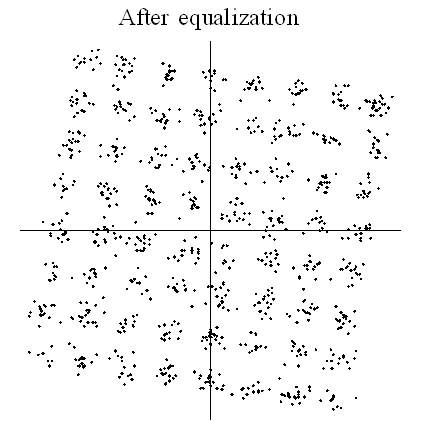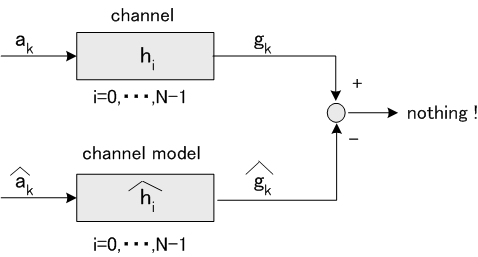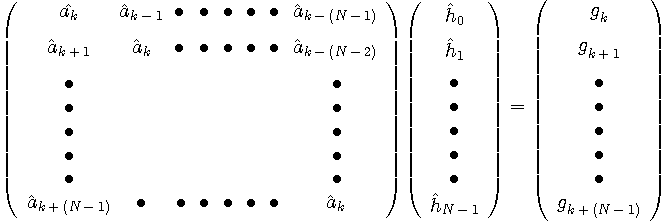

|
Appendix ( blind problem ) |
|
Linear blind problems are categorized in two types. [A] Blind equalization (deconvolution) Find inverse of the channel only from the received signal. Such problem has double freedom between channel distortion and transmitted sequence, and requires the following conditions. 1.
2.
Linear system is possible to have an inverse around a time-origin. In 1975, Sato proposed the following strategy makes the total system transparent for uniformly distributed transmitted sequence.
In 1980, Benveniste showed that a wide class of cost function given by
is blindly equalizable for any distributions except Gaussian. In the same year, Godard proposed a strategy for complex signal, i.e, the constant modulus blind equalization for QAM.
Intuitive interpretation of blind strategy can be equivalently said in following two ways. 1. To untangle time-dependency in the signal 2. To sharpen the distribution diverged through the linear system. For Godard's cost function, under assumptions; Q=2, we can derive an explicit form;
where
A
minimum is realized at The algorithm for QAM based on Sato's cost function is given by
The computer simulation succeeds as follows.
[B] Blind identification In mobile system, the channel varies rapidly and its inverse doesn't always exist. Then we must pursue other methods based on identification principle. Find
channel response and/or the transmitted sequence
The algebraic structure in noiseless case that estimates jointly channel response and the transmitted sequence should be described as follows. step1:
For each (2N-1)-dimensional candidate vector
step2:
If the solution step3: By continuing above steps, find a coherent chain of survivors. In general, the coherent chain of survivors cannot be uniquely determined due to possibility of branch and merge of survived path. Such ill cases should be listed up and referred in practical extension to the noisy cases. Ref. Y.Sato, "A Blind Sequence Detection and Its Application to Digital Mobile Communication" IEEE Journal on Selected Areas in Communications 13(1), pp.49-58, Jan. 1995 RAKE receiver employed in CDMA is the matched filter which is obtained by estimates of channel response by long correlation. The diverged response can be completely concentrated at time origin, only if the whitening filter is put before RAKE receiver.
|
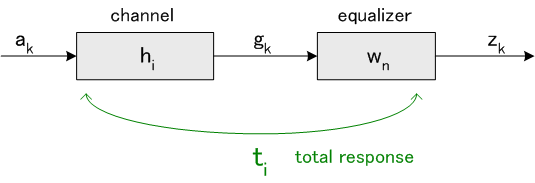
 is IID except Gaussian.
is IID except Gaussian.
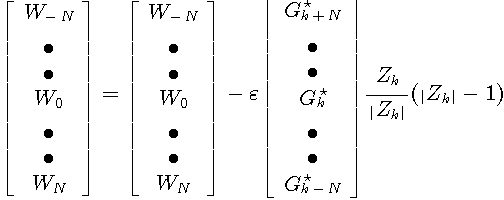 .
.
